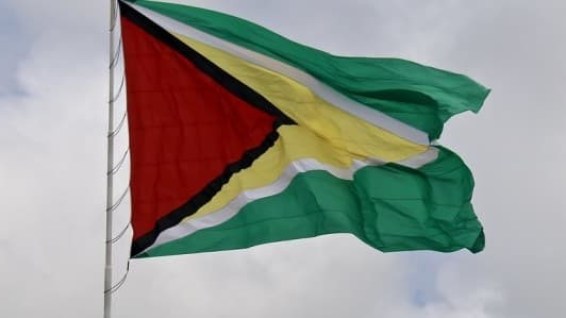
Since the controversial 1899 decision which set the border between Venezuela and Guyana, Caracas has repeatedly contested the ruling, claiming the 61,000 square miles west of the Essequibo river belongs to the Bolivarian Republic.
By Oil Price – Mettew Smith
Sep 20, 2021
That controversy has heated up in recent years with authoritarian Venezuelan President Nicolás Maduro reinvigorating the claim as a means of distracting Venezuela’s long-suffering people from the country’s economic collapse and near implosion into a failed state.
In a surprising development at the Norway brokered negotiations in México between Maduro’s regime and Venezuela’s opposition, an agreement was established between both parties reviving the petrostate’s territorial claims against Guyana. This has alarmed Guyana’s President Irfaan Ali with the Ministry of Foreign Affairs releasing a statement rejecting that agreement and going on to say that “Guyana cannot be used as an altar of sacrifice for settlement of Venezuela’s internal political differences.” Cynically, the renewed pressure being applied by Maduro with the support of Venezuela’s opposition, led by internationally recognized interim president Juan Guaido comes at a time when ExxonMobil has made significant oil discoveries in the contested region. Since 2015, the global energy supermajor has made 22 discoveries in the 6.6-million-acre Stabroek Block offshore Guyana and estimates that it has at least 9 million barrels of recoverable oil resources. Part of the Stabroek Block, including a segment of the deep-water Liza oilfield, sits in the contested Essequibo territory, known in Venezuela as Guayana Esequiba.
Caracas’ claim poses an existential threat to Guyana because the contested region makes up around three-quarters of the former British colony’s territory and captures a significant portion of its oil rich territorial waters.
This could not come at a worse time for Guyana. The local economy was ravaged by the COVID-19 pandemic and the tiny deeply-impoverished South American nation is finally benefiting from its considerable oil wealth to the point where 2020 gross domestic product expanded by an impressive 43%.
Exxon is now pumping 120,000 barrels per day from the Stabroek Block with production slated to reach 340,000 barrels during 2022 when the Liza Destiny FPSO comes on line, and as high as 1 million barrels daily by 2026. That will see Guyana pumping more crude oil than Venezuela, which according to OPEC’s Monthly Oil Market Report for September 2021 only produced an average of 523,000 barrels per day during August.
This highlights the considerable incentive for Venezuela to seize control of the Essequibo region which contains part of Exxon’s Stabroek Block. Venezuela urgently needs to boost its crude oil output, which is the only realistic means of generating the income required to rebuild the petrostate’s shattered economy.
The IMF estimates the OPEC member’s gross domestic product shrank by a whopping 30% during 2020 after a disastrous 2019 where it contracted 35%. The crisis riven petrostate’s economy has not enjoyed a single year of growth since 2013 when it expanded by a paltry 1.3%, despite Brent averaging $108.55 per barrel in a year where Venezuela pumped nearly 2.4 million barrels per day. The disintegration of Venezuela’s economic backbone, its petroleum industry, has been so rapid that less than a decade later, the country, according to OPEC secondary sources, only pumped an average of 514,375 barrels daily for the first eight months of 2021.
While the territorial issue has created a consensus between Venezuela’s opposition and the Maduro regime it has further destabilized a volatile region. Venezuela’s border with Colombia has been a regional flashpoint for over a decade. The most recent conflict was fighting earlier this year between Venezuelan security forces and dissident leftist Colombian guerillas, who refused to lay down arms as part of the government’s 2016 peace accord with the Revolutionary Armed Forces of Colombia.
Venezuela in the past has engaged in serious saber-rattling against Guyana.
In 2018, a Venezuelan naval vessel confronted an oil exploration ship operating for Exxon in Guyanese waters.
…
Read More: Oil Price – Will south America’s latest oil boom spark a military clash?
…

